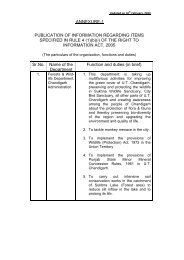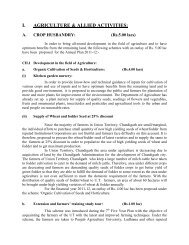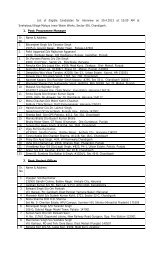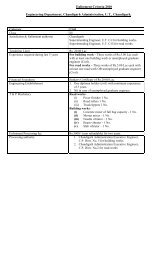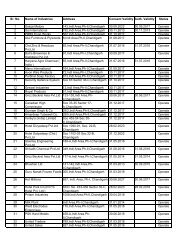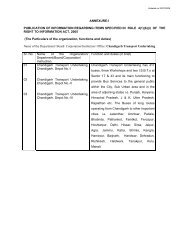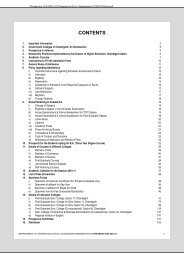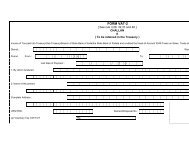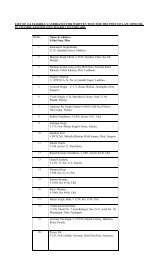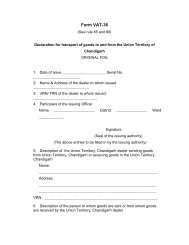Medicinal Plants of Chandigarh
Medicinal Plants of Chandigarh
Medicinal Plants of Chandigarh
Create successful ePaper yourself
Turn your PDF publications into a flip-book with our unique Google optimized e-Paper software.
RAM TULSI<br />
Ocimum sanctum<br />
RATI<br />
Abrus precatorius<br />
Habit<br />
Distribution<br />
Parts used<br />
: A much-branched, aromatic and erect herb with purplish or crimson<br />
flowers.<br />
: Throughout India, ascending upto 1800 m in the Himalayas.<br />
: Leaves, seeds.<br />
Habit<br />
Distribution<br />
Parts used<br />
: Woody climber, Flowers pale-violet at first, reddish afterwards.<br />
: Sub-Himalayan tracts.<br />
: Seeds and Roots.<br />
Constitutes: Leaves and seeds yield an<br />
essential oil containing eugenol,<br />
carvacrol, methyl eugenol and<br />
caryophyllence.<br />
Therapeutic uses: The oil possesses<br />
antibacterial and insecticidal properties.<br />
Seeds are mucilaginous, demulcent,<br />
useful in complaints <strong>of</strong> the urinary<br />
systems. The juice or infusion <strong>of</strong> leaves<br />
possesses diaphoretic, antiperiodic,<br />
simulating and expectorant properties.<br />
It is used in bronchitis, applied to skin in<br />
ringworm and other cutaneous diseases<br />
and dropped into the ear to relieve<br />
earache.<br />
Constitutes: Seeds contain abrin,<br />
abrine and abarnin while roots contain<br />
precol, abrol and two alkaloids<br />
abraime & orecasine.<br />
Therapeutic uses: Seeds are<br />
purgative, emetic, tonic, aphrodisiac<br />
in nature. Roots are emetic, alexiteric.<br />
Locally, the leaf juice mixed with oil is<br />
applied on painful swellings <strong>of</strong> the<br />
body. The root used as a substitude <strong>of</strong><br />
liquorice.<br />
32 33



